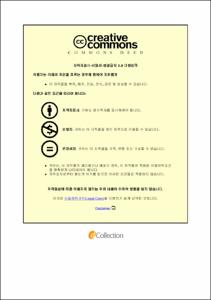조선 후기 일본인의 표류 양상과 그 송환 방식
- Abstract
- Drift refers to a state in which a sudden change in weather conditions during maritime activities causes ships to drift away from control. If the drift continued and the ship arrived at the boundary of another country, it is said that It was washed ashore. And the people who are the central figure in this case are called drifters.
It can be said that drifters are unusual in the early modern East Asia world. At that time, East Asian countries were implementing the policy of exclusion(鎖國) and maritime prohibitions(海禁) that prohibited their citizens from traveling abroad and restricted the entry of foreigners. So drifters should have been punished for violating the policy in principle, but they were exempted from the crime of crossing the border due to an accident caused by chance. This practice was repeated and settled, and the system for the repatriation of drifters between East Asian countries was established. This is called the system for the repatriation of drifters in the early modern East Asia.
The system for the repatriation of drifters performed various functions in the early modern East Asia world. It provided a means for the nation to strengthen the amicable relations with other countries, and also provided an opp
ortunity for individuals to experience foreign culture. However, the system for the repatriation of drifters had various aspects depending on the timing, country, and diplomatic relations, there has been a growing awareness that specific and individual analyses are needed in recent years.
As part of the case study on the system for the repatriation of drifters, This study will explore what was the drift pattern of japanese in the late joseon dynasty and when and how the methods of repatriation changed. First, check the changing relationship between Joseon and Japan in the early joseon dynasty. Furthermore, figure out the overall status of japanese drifters by organizing specific cases.
Secondly, classify Japanese drifters as ‘drifters in Tsusima area’ and ‘drifters except for Tsusima area’, and divide the methods of the repatriation into ‘interrogation(問情)’, ‘transport(護送)’, ‘hospitality(宴享)’. Through this process, It will be determined how the methods of repatriation of Japanese drifters in Joeson changed from time to time.
- Issued Date
- 2020
- Awarded Date
- 2020. 8
- Type
- Dissertation
- Publisher
- 부경대학교
- Affiliation
- 부경대학교 대학원
- Department
- 대학원 사학과
- Advisor
- 박화진
- Table Of Contents
- 제Ⅰ장 머리말 1
제1절 문제 제기 및 연구 동향 1
제2절 연구 방법 5
제Ⅱ장 조선 전기 일본인의 표류 양상 7
제1절 조선 전기의 대일 관계 7
제2절 조선 전기 일본인의 표류 양상 11
가. 조선 전기 일본인의 표류 11
나. 일본인의 표류 사례 분석 13
(1). 15세기의 사례 13
(2). 16세기의 사례 20
제Ⅲ장 조선 후기 일본인의 표류와 송환 27
제1절 조선 후기 일본인의 표류 사례 27
가. 조선 후기 일본인의 표류 27
나. 일본 출신지별 표류 33
(1). 사쓰마 지역 표류민 33
(2). 쓰시마 지역 표류민 36
(3). 셋쓰 지역 표류민 37
다. 일본인의 표류와 해양환경 38
제2절 조선 후기 일본인 표류민 송환 방식 42
가. 쓰시마 지역 표류민 43
나. 쓰시마 외 지역의 표류민 60
제Ⅳ장 맺음말 68
참고문헌 71
- Degree
- Master
- Files in This Item:
-
-
Download
 조선 후기 일본인의 표류 양상과 그 송환 방식.pdf
기타 데이터 / 2.26 MB / Adobe PDF
조선 후기 일본인의 표류 양상과 그 송환 방식.pdf
기타 데이터 / 2.26 MB / Adobe PDF
-
Items in Repository are protected by copyright, with all rights reserved, unless otherwise indicated.